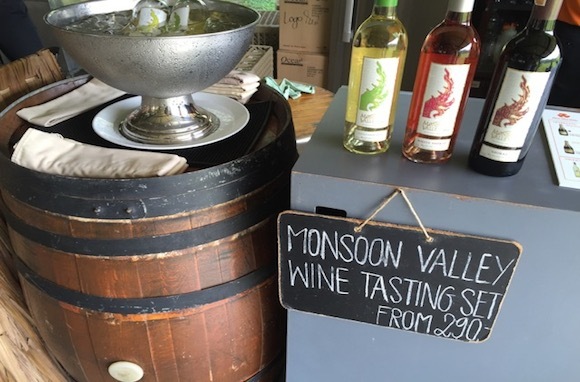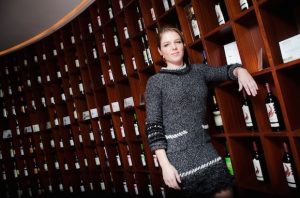Here's a little secret. Thai wines are good. Really good. Some are even great.
I'll bet you didn't even know they were a thing.
Well, they're vying for their moment in the sun, since unfortunately you'll usually only find them on the wine lists at scattered, mostly upscale, Thai restaurants in Bangkok, London, Paris and New York.
Kathrin Puff, a 37-year-old winemaker, and her staff of 20 are doing their best to free them from wine snobbery purgatory here at Monsoon Valley Wines in the hills above Hua Hin, Thailand.
Puff, born in Germany but now living full time in Thailand, has been making wine for over a decade, mostly in Italy, New Zealand and Germany, before moving here in 2006.
Owned by the Siam Winery Group, the creator of ubiquitous pick-me-up Red Bull and owner of nine Thai vineyards of which the Monsoon Valley is the largest, the operation is located about a three-hour drive from Bangkok. The vines yield just 300,000 bottles per year, half of which are exported and end up mostly on the wine lists of Thai restaurants.
"There is a prejudice that Thai wines should be tied to Thai food and it may be decades before people realize that these wines go with any cuisine," Puff laments.
As if to make the point clear, the winery operates an excellent restaurant helmed by classically-trained chef Kitti Kantiwong, who honed his skills on luxury cruise ships; the menu only hints at Thai flavors, with support from herbs and vegetables grown on the property and locally caught seafood.
I savored the chilled crab salad with apple timbale, foie gras terrine on toast, freshly caught lobster in its shell topped with frozen red curry, and a grilled rib eye in a red wine reduction, all served tapas-style, followed by a refreshingly brisk red curry ice cream.
Naturally, each dish was accompanied by wines made on the property, including a crisp and elegant colombard, a medium bodied Shiraz, and the vineyard's "flagship" Cuvee de Siam Blanc (half Chenin blanc, half Colombard).
All of them compared favorably to any French or Californian wines I've tasted costing much more (a trio of Monsoon's best-selling wines—a red, white, and rose—goes for the princely sum of 290 Baht, or about $2.75 each).
Tropical viniculture is not easy, Puff admits. "We are limited in the varietal spectrum by climactic conditions. We're writing our own book here, trying stuff just to see if it works. It's baby steps."
Weather can be unpredictable. "We have just 120 to 125 days from pruning until harvest to get the grapes in."
But from my visit, it looks like the combination of fine food and fine wines is catching on. As I dined and sipped, tables were packed with locals out for a day trip from Bangkok, as well as tourists from North America and Europe, many cocooning at the beachfront InterContinental Resort Hua Hin, which features these wines in its restaurants and organizes excursions to the vineyard. A new, larger restaurant, seating 100, with a more elaborate kitchen, is opening in early 2016.
The next time I dine at a Thai restaurant I'll be looking for Monsoon Valley and other Thai wines on the list. But I also hope to see them on other wine lists as well in the near future.
I hope Puff is wrong and it won't take decades. They've earned their spot.
Ready to make the trip? See our current fare finds to Bangkok (BKK) from all over the US and Canada.







